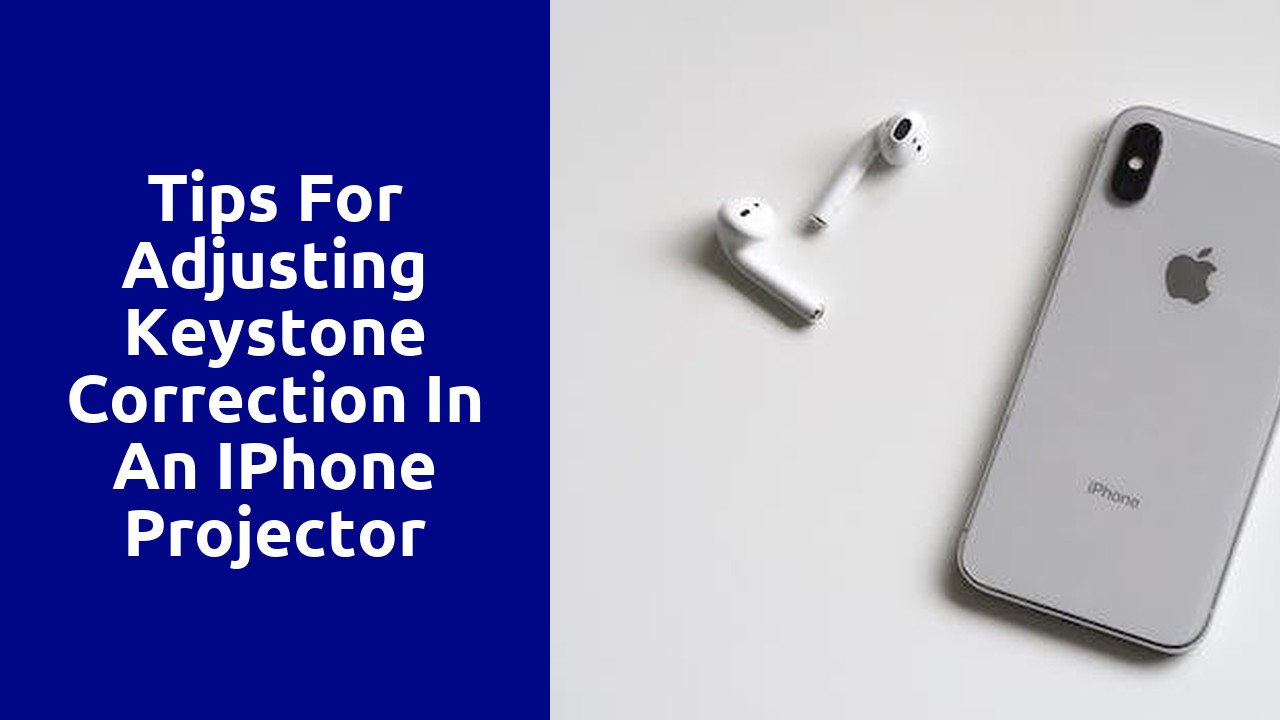

When using an iPhone projector, one important feature to understand is keystone correction. Keystone correction is a function that helps in adjusting the image distortion that occurs when the projector is not aligned properly with the projection screen. Without keystone correction, the projected image may appear trapezoidal in shape, leading to a distorted viewing experience.
To utilize keystone correction on an iPhone projector, users can access the settings menu on their device. From there, they can navigate to the projector settings and find the keystone correction option. Once selected, users can make adjustments to the image by moving it vertically or horizontally until it is aligned with the screen. This innovative feature ensures that images are projected properly and allows for a more enjoyable viewing experience.
Calibrating the keystone correction feature is crucial in achieving optimal display quality. Keystone correction is a feature found in many multimedia projectors that corrects the distortion caused by projecting at an angle. It is particularly useful when the projector cannot be placed exactly perpendicular to the screen or when it is not possible to position the projector directly in front of the screen.
When calibrating keystone correction, it is essential to consider the degree of correction required. An excessive correction may result in image degradation, such as loss of clarity or distortion of the projected content. On the other hand, inadequate correction may lead to a skewed or misaligned image, impacting the viewer's experience negatively. Therefore, finding the right balance in keystone correction is crucial to ensuring an optimal display.
One common issue that users may encounter with keystone correction on iPhone projectors is distortion in the projected image. This distortion can be caused by the keystone correction feature attempting to correct the image's perspective but ultimately having an adverse effect. As a result, the edges of the projected image may appear stretched or skewed, making it difficult to view the content clearly.
Another issue that users may face is limited keystone correction angles. While keystone correction is intended to correct the trapezoidal distortion that occurs when a projector is not placed at the perfect angle, some iPhone projectors have a limited range of adjustment. This means that if the projector is positioned at an extreme angle, the keystone correction may not be able to fully correct the distortion, resulting in a less than optimal viewing experience.
When it comes to projecting images or videos, achieving a distortion-free projection is crucial. One of the key tools in achieving this is the keystone correction feature. Keystone correction refers to the ability to correct the trapezoidal distortion that occurs when a projector is not perfectly aligned with the screen surface.
Mastering keystone correction is essential for ensuring that the projected image is crisp, clear, and true to its original form. By adjusting the keystone correction settings, you can rectify any skewed or distorted images, making them appear as they were intended. This feature is particularly important for presentations, movie screenings, or any other situations where precise and accurate visuals matter. With a little practice and understanding, anyone can master keystone correction and enjoy a distortion-free projection experience.
iPhone projectors have revolutionized the way we view content on our devices. With their compact size and high-resolution display, they have become an essential accessory for both personal and professional use. One of the standout features of these projectors is the keystone correction feature, which allows users to adjust the image and ensure that it appears perfectly squared on the screen.
The keystone correction feature on iPhone projectors is a game-changer for anyone who frequently uses the device for presentations or movie nights. No longer do you have to worry about a distorted image or crooked lines ruining your viewing experience. With just a few adjustments, you can easily align the image and project it onto any surface without any distortion. This feature makes iPhone projectors incredibly versatile and suitable for a wide range of applications.
One key feature that sets iPhone projectors apart from other portable projectors is their built-in keystone correction technology. This innovative feature allows users to adjust the image shape and eliminate any distortions caused by projecting at an angle. By enabling keystone correction on your iPhone projector, you can ensure that the image remains symmetrical and true to its original form, maximizing the overall image quality.
To make the most out of keystone correction, it is important to know how to properly utilize this feature. When setting up your iPhone projector, ensure that it is positioned parallel to the projection surface and at an optimal distance. This will help minimize the need for excessive keystone correction adjustments, consequently maintaining image sharpness and reducing any potential distortions. Furthermore, it is crucial to access the keystone correction settings on your iPhone projector and make precise adjustments as needed, taking into account the shape and alignment of the projection surface. By mastering these techniques, you can enhance the image quality of your iPhone projector, resulting in a more immersive and visually appealing viewing experience.